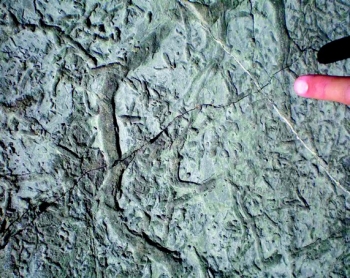Burrowing Animals May Have Stabilized Earth's Oxygen

By Joe Spivak
The presence of oxygen in the Earth’s atmosphere is a critical component to life as we know it. But how did our atmosphere come into existence? What events created the oxygen rich air that we breathe? Scientists think that the answer lies in the lowliest of creatures; creatures that we don’t even notice unless we pull back the muck and ‘dig deep’.
Scientists theorize that around 540 million years ago, the first burrowing animals evolved in the muck on the ocean floor. As these animals weaved their way through the sediment at the bottom of the ocean, they were exposed to the oxygenated water in a process called ‘bioturbation’. As a result, the bacteria in the sediment ‘fixed’ the phosphorous present in the water, creating a net negative feedback loop which ultimately decreased the oceans’ store of oxygen. At first glance, this may seem counterintuitive…don’t animals need oxygen to survive? Well, yes, but in reality animals require surprisingly little oxygen to grow. More importantly, it is the oxygen and atmospheric stability brought about by the ‘bioturbation’ that has been proven to be critical to evolution.
With the amount of oxygen available in the ocean and in the atmosphere stabilized, complex organisms were able to develop in and from this new environment. Therefore, the net atmospheric stability created by the first burrowing creatures helped to drive the evolutionary process and form life as we know it.
Extension Questions
- What other oceanic and atmospheric factors contributed to evolution?
- What other examples of negative feedback loops can you think of? Positive feedback loops? (Hint: think blood)

